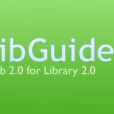So I probably didn’t make a lot of friends at Springshare with my blog post about LibGuides this morning (if you haven’t already, take a look at the update I made to my original post). And I do apologize for lumping them in with EBSCO, because it appears that they have not taken away something that people had access to in LibGuides 1.0 and made it only available in the CMS product. That said, their new API (as opposed to their old API which they shouldn’t have been called API at all because it’s not a true API, but is still available in LibGuides 2.0) is only available in their CMS product. If you want to use JSON data or need full access to the API, you will need to upgrade to the CMS product, so it is accurate that their API is not open. But if you used the thing previously referred to as an API in LibGuides 1.0, you should still be able to do everything you did with it previously when you upgrade to 2.0. My understanding of this situation was based on communications from Springshare over the past month and a half with our web librarian, from what documentation I could find on their website, and from a response to a question I posed on Twitter.
I think this is a great example of how important clear communications are for a company. Throwing out terms like widgets and APIs and then using them in different ways in different contexts is bound to lead to confusion (especially if your original API wasn’t actually a real API). That I couldn’t find the information in their documentation or community site — which, while it is a treasure trove of good information, is also big, unwieldy, disorganized, and incomplete — is a huge problem for current and potential future customers. That the emails from support were so unclear that they led several intelligent librarian to the completely opposite conclusion is not good at all.
I still really love using LibGuides and am thrilled that we are ditching Library a la Carte (as are my colleagues), but the neat freak (and librarian) in me really wants to open the amazingly useful junk drawer that is their documentation and organize it for them. 😉





